
Today, my blog will leap into a topic outside of nature and personal matters. Today, my blog will talk about the fascinating psychological concept of conditioning.
Hi! Meet Puti. He is a neat, energetic, social, and affectionate mouse. His name translates to "white" in English, justifiably describing his appearance.
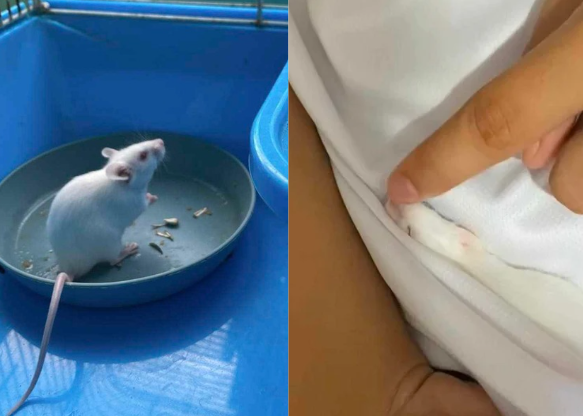
*Mice are social animals. They are nocturnal, meaning they are active at night. Mice can be fun to care for due to their active behaviors, soft fur, and cute paws. Their sense of smell is their most developed sense, crucial for finding food and navigating their environment. Similarly, they are highly intelligent. They share many genes with humans and possess organ systems similar to ours. Their strong spatial and social memory makes them susceptible to learning and training.
In my introductory blog, I mentioned that I am a Psychology student. For the final project in our major subject, we conducted a "Mice Conditioning" activity, where our objective was to condition or train a mouse to cross a maze within 7 seconds. Was it easy? No. Did our mouse succeed? Yes. How did we achieve this? Here's how.
The Maze and Conditioning Theories
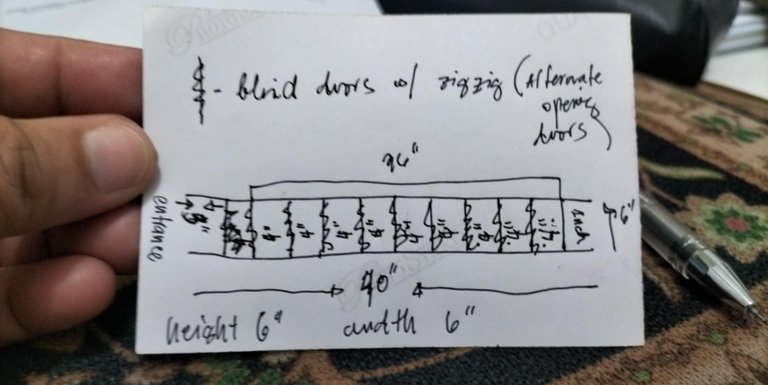
For our project, we constructed a cardboard maze. It measured 36 inches in length, with a width and height of 6 inches. The entrance was 3 inches, and the exit floor was 1 inch wide. Nine doors were distanced 4 inches apart throughout the maze.
Our objective was to train our mouse to navigate the maze quickly. In accordance with our class discussions, we utilized two theories of learning: Classical and Operant Conditioning. Both theories have proven valuable in conducting experiments, therapy, and behavioral training.
Understanding Classical and Operant Conditioning
In Classical Conditioning, an organism learns to associate two stimuli. For example, a dog may learn to salivate at the sound of a bell if the bell consistently comes before the delivery of food. Originally, the bell is a neutral stimulus that does not elicit salivation. However, through repeated pairings of the bell with food, the dog learns to associate the bell with the expectation of food. This results in the dog salivating in response to the bell alone, even without the presence of food.
Meanwhile, Operant Conditioning involves learning to associate one's own behavior with its consequences. If a behavior is followed by a desirable outcome or a reward (reinforcement), it is more likely to be repeated. Conversely, if a behavior is followed by an undesirable outcome (punishment), it is less likely to be repeated. An instance would be, a dog that receives a treat for sitting on command is more likely to repeat this behavior. Similarly, a dog that is scolded for excessive barking may be less likely to bark as frequently in the future.
TRAINING DAYS
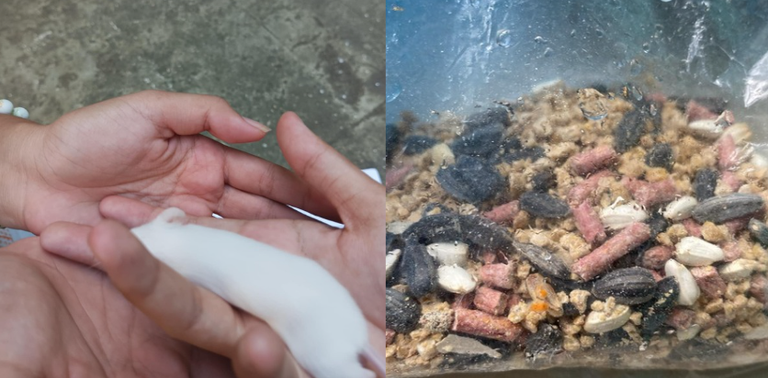
First, we applied Operant Conditioning by using food rewards. We tested various treats, like cheese, bread, and nuts, but Puti's interest in these rewards diminished quickly. Later on, we discovered that he likes sunflower seeds and those were a more effective and sustained motivator. We tried placing it on the exit door for him to search for and use it as guide through the exit. But, we weren't able to achieve our goal.
Next, we incorporated punishment. When he stopped, groomed, or reversed direction within the maze, we gently flicked his butt. However, this approach was ineffective, reducing Puti's motivation and overall progress. This outcome aligns with the law of effect, which states that behaviors followed by positive consequences are strengthened, while those followed by negative consequences are weakened.
On our practice session with Puti in school, as we are observing him, we found out that what he like is freedom. He eagerly sought to explore the surroundings. Recognizing this, we limited his freedom time. After three consecutive quick runs through the maze, Puti was allowed to explore outside his cage for 2 minutes and 30 seconds. To signal the end of the freedom period, we created a buzzer sound, effectively applying Classical Conditioning, which is associating the buzzer sound with the end of the freedom period. This approach was successful. He began to run through the maze more quickly to regain his freedom. We consistently achieved run times of less than or equal to 10 seconds.
FINAL RUN
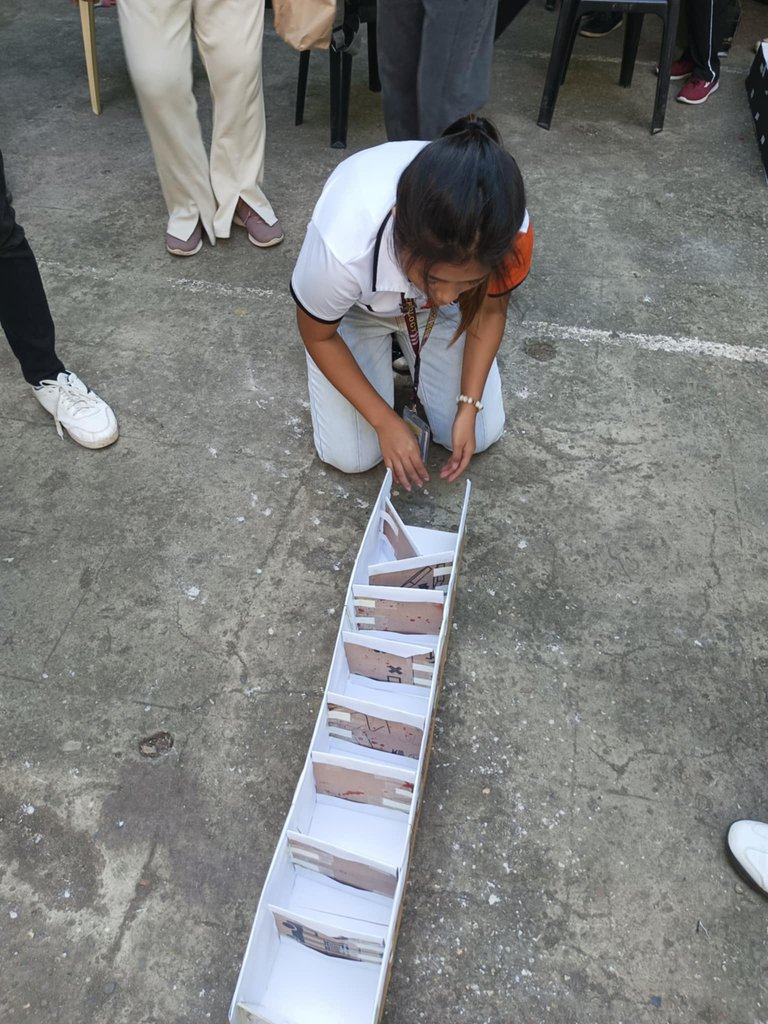
This is my partner, Rhea Mel.
The night before the final competition, I created a new maze and restricted Puti's food intake, following my father's advice. We believed this would increase his motivation to explore and find food. On the day of the competition, he performed well during practice runs, consistently achieving 6-7 second duration. However, during the actual competition, he reverted to his usual 10-second pace. But surprisingly, when he was borrowed by a schoolmate to run for them on their maze, he ran for 5 quick seconds.
AREAS OF IMPROVEMENT AND REALIZATIONS
After our activity, my father furtherly explained that, mice tend to be less active in unfamiliar environments. They often pause to observe their surroundings and may even retreat if they feel uncomfortable. Human presence, especially if the mice are not accustomed to being handled, can also cause anxiety. Additionally, the presence of their own scent (urine and feces) within a certain place can make them feel more territorial and less motivated to explore and exit. Furthermore, mice have periods of peak energy. Continuous training can lead to fatigue and diminish their performance. It's crucial to consider their energy levels and avoid overtraining.
Based on these, I believe Puti's slower performance during the final run can be attributed to several factors. Puti's familiarity with our scent and presence may have reduced his motivation to get out the maze, because he is confident that we will not harm him. The presence of Puti's own scent within the old and new maze might have made him feel more territorial and less inclined to leave. Repeated training sessions may have caused fatigue, impacting his performance. The presence of other students during the competition may likely created a stressful and unfamiliar environment for Puti. The schoolmate's scent and maze might be new, plus the cheering might have startled Puti, causing him to run through their maze more quickly.
Disclaimer: These observations and realizations are based on my personal experiences only and may not be scientifically validated.
I often wondered why I learned these advice only the night before the final run and furtherly after. However, I understand that the effectiveness of training can vary depending on individual mice, the consistency of training sessions (whether using fixed or variable ratio and interval schedules), and the precise click on the timer used for the run.
Despite the challenges and uncertainties, I am grateful for the opportunity to participate in this Mice Conditioning activity. It was an invaluable experience that provided me with a deeper understanding of animal behavior, especially on mice and the principles of learning. Although Puti's performance during the final run may not have met our initial expectations, we learned a great deal throughout the training process. We witnessed Puti's remarkable progress and his ability to learn and adapt, demonstrating the intelligence and capabilities of these small creatures.
If I were given the chance to train a mouse again, I would certainly do it, applying all the improvements we should have implemented in Puti's training.
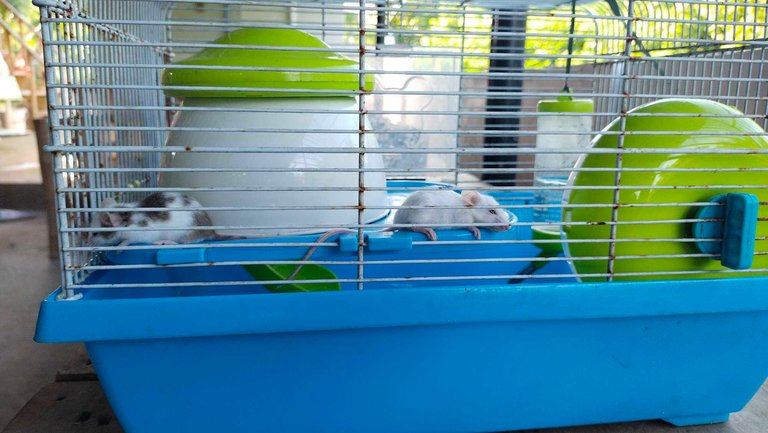
This would be all. Thank you for reading. See you on the next blog!
Wow, your dedication is amazing 🤩
Thank you, @gelultimate!
This is a great theory 👏🏻
Thank you, @marieyanlab! It was worth the uncertainties hehe.
Oh! I recognize this xD
I hope the project went well!
Reall?? Good to know! It did, thankfully.
Wow, this is so cool! I love how you used both classical and operant conditioning to train Puti.
Thank you!
Wow!So proud of your hard works! Ang ako tawn naka 3 pajud.🤟☝️
sa nihuwam rapod lagi naka uno. sge nalang hahahahahhaaha
Congratulations @mriakyla! You have completed the following achievement on the Hive blockchain And have been rewarded with New badge(s)
Your next target is to reach 100 replies.
Your next target is to reach 100 comments.
You can view your badges on your board and compare yourself to others in the Ranking
If you no longer want to receive notifications, reply to this comment with the word
STOPThank you, @hivebuzz!
Thank you!!